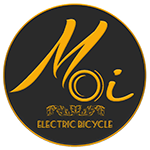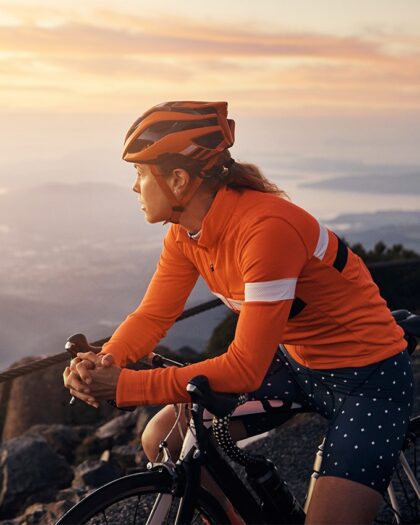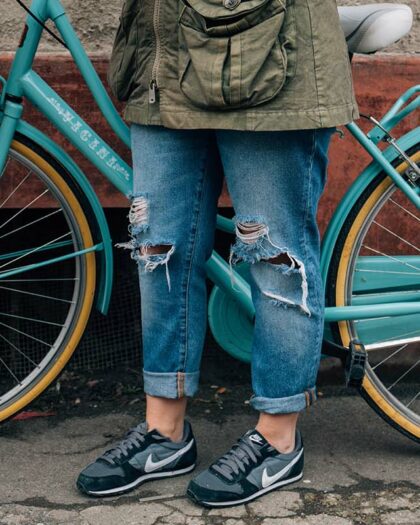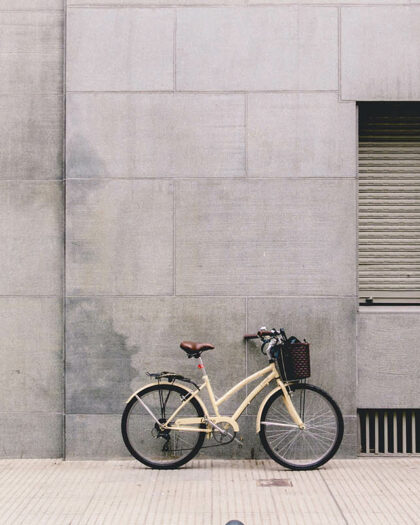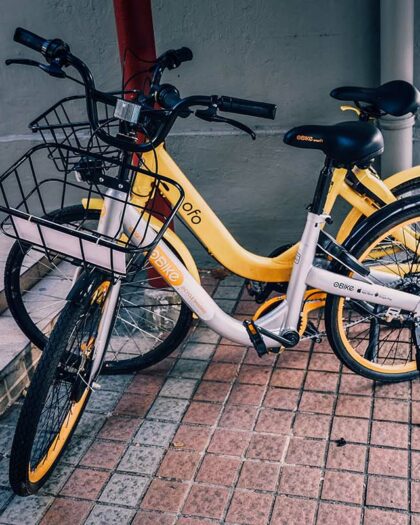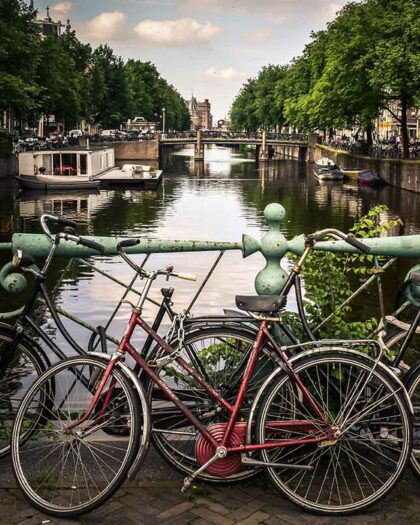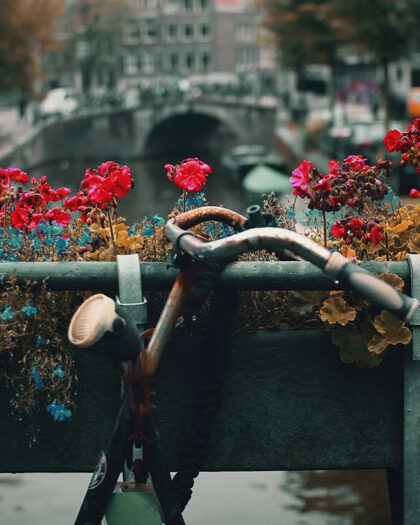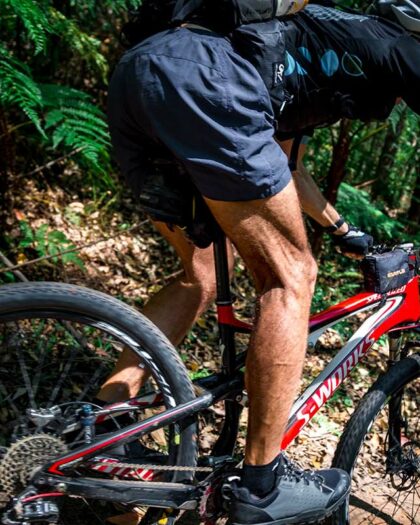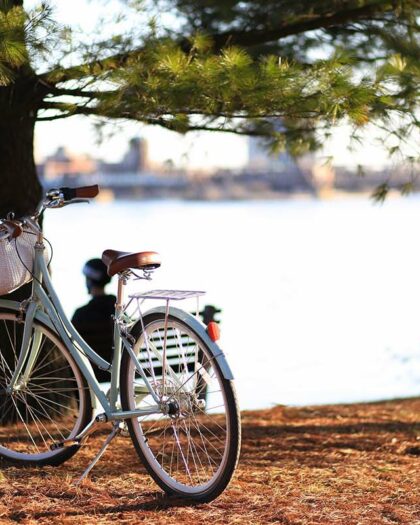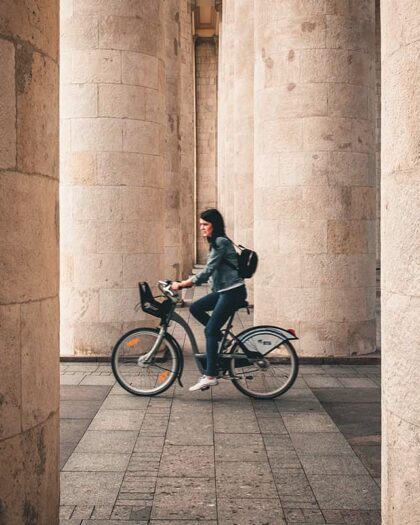
As touring season ramps up and you’re getting your things together, you may be weighing what you do and do not need to bring, or what you need to make room for as your storage space fills up. You may be forced to make cutthroat decisions, and knowing which items to eliminate from your supplies can make a huge difference in your storage space, your stress level, and your overall weight. A dry or "shakedown" ride is always a good way to find out what is working and what isn’t.
1. An Expensive “Touring” Bike
Sure, having a strong frame and nice tires on your bike is reassuring, but is not absolutely necessary. The bottom line -- you need to find a bike you’re comfortable riding, and one that can carry your load. It doesn’t hurt to find one you like looking at, either.
2. Cleated Shoes and Clip-in/Clipless Pedals
We started our bike tour with cleated shoes and pedals, and quickly learned that we didn’t need them. About 3/4 of the cyclists we came across wore cleats/clip-ins though, and some thought we were crazy for not using them! To us, shoes and clips are a little on the pricey end, and unless you’re a serious cyclist you probably won’t notice a difference in your pedaling. Plus, you’ll fall over a lot when you start using them, and people in cars will laugh at you. (Just me?)
3. Lots of money
Money is a huge obstacle for people wanting to tour. They think they don’t have enough of it. But if you’ve read or watched anything we’ve done, then you’ve no doubt seen us cut costs and do things as cheaply as possible. It’s 100% possible to be safe, warm and well-fed while at the same time being cost-efficient. Make sure you set a budget, and stay as close to that daily budget as you can. $10 a day, $20 a day, or whatever you can afford. Things like bananas and peanut butter are way cheaper than any restaurant, camping out is way cheaper than hotels, and it will be VERY easy to cut out your Ebay addiction when you're biking all day. Trust me.
4. Cycling Jerseys
If you want to buy a cycling jersey, buy a cycling jersey. They can look cool, they hold some of your loose items effectively, and there’s even an Oberon Jersey, so they've got to be cool. That being said, people who did the first TransAm ride in 1976 were crossing the country in tank tops and cut-off jean shorts, so think about that before you think you really NEED a cycling jersey. You know what else keeps you cool while biking? No jersey.
4. Cycling Jerseys5. A Wealth of Knowledge of Bike Repair
Chances are you don’t know everything about repairing bikes. Neither do we. The best thing is to watch some free online tutorials on how to do some basic maintenance, or you can go to free classes at your local REI (if you have one). If you don’t have these options, then go to a local bike shop and just ask if they’ll show you how to repair a tire! That's not even a joke, you should really try it!
6. Several Days Worth of Bike Clothing
We carried lots of clothing, and it took up a lot of room in our panniers. Then once we neared the end we realized that we were carrying too many different layers, and that we could get the same comfort and warmth from fewer items that were higher quality. You'll end up paying a little more for these items, but they drastically cut down on the amount of clothing you have to carry. Look for clothes that wick the sweat away from your body. Wool clothing keeps you cool in the summer and warm in the winter, so it serves two purposes. Also, almost every town has a place to do your laundry, so it’s very likely that you’ll be able to wash your dirty pair while wearing your clean pair, and switch when necessary. This cuts down on the amount of clothing you pack, and also lets you get rid of that old change jar you’ve had sitting on your shelf for years!
7. A Full Kitchen’s Worth of Cooking Supplies
You should keep it to your essentials when dealing with your food while touring. Your cooking pot can double as a bowl or supply holder, your plate can double as a cutting board, and a spork is both fun to say and easy to use! Just make sure that your knife NEVER doubles as your spoon -- soups are really hard to eat with a knife.
8. Makeup/Blow Dryer/Vanity Items
Seriously.
9. A Solar Charger
Solar chargers are fun. They’re cool techie gadgets that charge your phone using the power of the sun! However, you will usually be able to find a power outlet no matter where you are. There may be some campsites or national parks that don’t have any outlets, but for the most part you will be able to find an outlet to plug your phone/mp3 player/tablet/computer into. Libraries, gas stations, post offices, and Yellowstone’s gift shop were all places we plugged in our phones and charged, while awkwardly standing near the counter making the clerk anxious. (Hint: The top plug in the outlets behind vending machines are almost always free and within reach for those who prefer 'stealth charging.')
10. Physical Fitness
Our first day on tour we did 13 miles. 13. You don’t need to be in great physical shape to do a tour. You can do 10 miles a day. You can be 80+ years old. You can be a paraplegic. Over the duration of our trip we heard about all of these situations, and the underlying theme throughout is that mental toughness trumps physical fitness. Hills suck, this is true. The wind can be awful, without a doubt. But the best part is, none of these things will stop you. You will get stronger every day, and soon 30-40 miles becomes easy. Then 70-80 miles becomes easy. As long as you don’t lose it mentally, your body will follow. Just make sure you take breaks every now and then and give your legs a rest!
